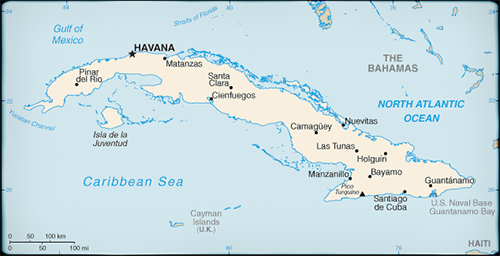Last week, the Central American countries and Mexico agreed to continue the transfer of Cubans from Costa Rica to Mexico, from where they will continue to the United States. Approximately 8,000 Cuban migrants were stranded in Costa Rica in November 2015 after Nicaragua closed its southern border and refused to let the Cubans pass.

Diplomats and immigration officials from Costa Rica, El Salvador, Guatemala, Mexico (as well as Panama, Honduras, and Belize) and the International Organization for Migration met in Guatemala City to review the initial transfer of 180 Cubans. The regional governments deemed the earlier trial run of 180 Cubans a "success." As such, the countries agreed to schedule two flights a week out of Costa Rica. The next flight is scheduled for February 4. The original route will continue to be used; the Cubans will be flown from Costa Rica to El Salvador and bused through Guatemala to the southern border of Mexico. Priority will be given to households with pregnant women or children, taking into account the date of entry into the country and the number of visas granted, and that these people have the financial resources.
Assuming the subsequent flights hold the same capacity as the first, 180 Cuban migrants per flight, 360 Cubans would leave Costa Rica each week. Costa Rica gave out 7,802 transit visas to Cuban migrants between November 14 and December 18, 2015 (only those given visas during that time period are eligible for the transfer), which means that at the given rate it will take approximately five months to transfer all the Cuban migrants. The Costa Rican government announced that immigration officials will be visiting the temporary shelters to renew transit visas, in case they have expired.
Meanwhile, members of the first group of 180 Cuban migrants have crossed the Mexican border into United States, taking advantage of the Cuban Adjustment Act (CAA) and the "wet foot, dry foot" policy that stems from it – which gives legal status to any Cuban reaching the United States. As suggested by the long title of the CAA ("An Act to adjust the status of Cuban refugees to that of lawful permanent residents of the United States"), the CAA was intended for refugees. However, Cubans have openly admitted that they, like other migrants, traveled to the United States in search of economic opportunities and/or family unification. Nevertheless, the Obama administration is adamant that it will not do away with this Cold War remnant.
It should be noted that there are options beyond simply accepting the islanders. As my colleague Dan Cadman explains, the CAA benefits only come to play if the Cubans are paroled into the United States. If they are kept in detention, the provisions of the CAA do not kick in and they can be repatriated – unless they can demonstrate legitimate fear of persecution if returned to Cuba.
